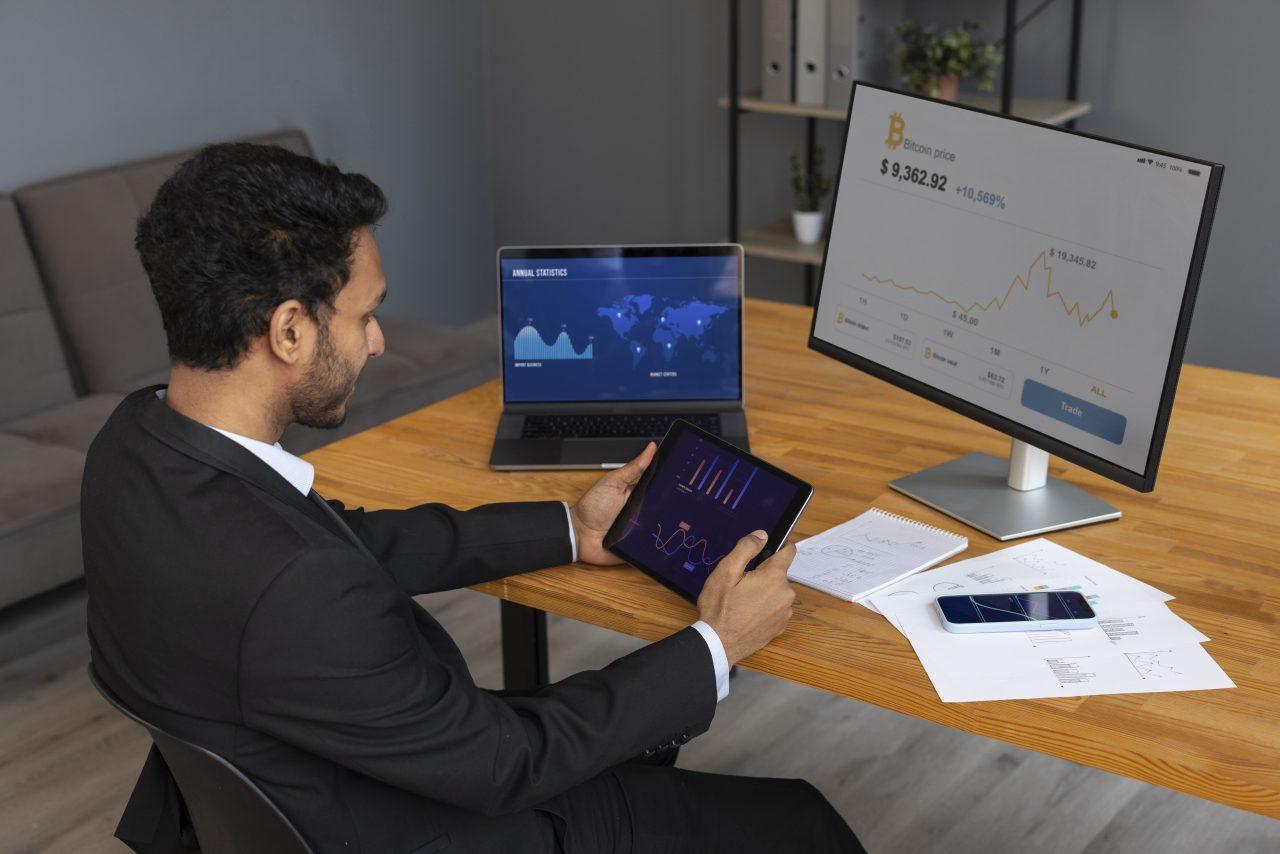The complete ICT trading strategy was introduced by Michael Huddleston in 2022, and it has transformed the way retail traders view the market. The ICT 2022 trading strategy is an algorithmic approach that focuses on both time and price. As Michael Huddleston says, price is nothing without time. How can the use of ICT strategy leverage trades?

Table of contents:
- Introduction
- Understanding the core principles of ICT trading strategy
- Key components of ICT trading strategy
- Implementing ICT trading strategy in practice
- Advantages of the ICT Trading Strategy
- Challenges of the ICT trading strategy
- Final thought
The trading world is full of strategies, indicators, and market analyses, which can often feel overwhelming. However, many traders have recently set aside other strategies to concentrate on just one: the Inner Circle Trader (ICT) strategy.
Created by Michael J. Huddleston, this strategy focuses on price movements, market structure, and trading techniques used by large institutions. The goal of the ICT trading strategy is to help traders predict market movements more accurately, increasing the chances of making profitable trades.
In this article, we will delve into the core principles of the ICT trading strategy, its components, and how traders can utilise it effectively to improve their trading outcomes. We will explore the essential elements such as market structure, liquidity pools, institutional order flow, and high-probability trading setups.
Understanding the core principles of ICT trading strategy
The ICT trading strategy, developed by Michael J. Huddleston, also known as “The Inner Circle Trader” (ICT), combines several advanced trading ideas to help traders make the most of price movements in financial markets. Unlike traditional strategies that often rely only on technical indicators or market sentiment, ICT focuses on the deeper mechanics of price action, institutional order flow, and liquidity.
By using ICT, traders can better understand why prices move in certain directions and spot key points where high-probability trading opportunities may arise. The strategy highlights the importance of understanding how large market players (often called “smart money“), such as institutional traders, banks, and hedge funds, behave. This knowledge helps retail traders align their positions with these larger players, boosting the chances of successful trades.
a. Market structure
The core of the ICT trading strategy is understanding market structure, which refers to the way price movements are organised in a market. By recognising market structure, traders can identify whether the market is trending (bullish or bearish) or consolidating (moving sideways). There are three main phases in market structure:
- Accumulation phase: This is when large institutional traders start building their positions. During this phase, the price often moves within a range, preparing for a breakout in a specific direction.
- Expansion phase: This phase occurs when the market breaks out of the range and begins trending, either upwards or downwards. Recognising the expansion phase is crucial for traders, as it signals potential trading opportunities.
- Distribution phase: After the expansion, institutional traders begin to take profits and reduce their positions. The price may pull back or reverse, offering potential exit points for traders.
b. Liquidity pools
Liquidity is a key idea in the ICT strategy. Liquidity pools are areas in the market where there are many buy or sell orders. These areas often align with key price levels, like support and resistance zones, previous highs and lows, or round numbers. Institutional traders are drawn to these pools because they provide the volume needed for their large orders without causing major price shifts.
ICT traders aim to identify these liquidity pools and use them as target areas for trade entries or exits. By understanding where liquidity is concentrated, traders can predict possible price movements before they happen.
c. Institutional order flow
This is another important part of the ICT strategy. Large financial institutions, such as hedge funds and banks, control most of the trading volume in the market. Their trading activities leave patterns on the price chart that skilled traders can spot. ICT traders focus on aligning their trades with institutional order flow, allowing them to trade in the direction of the market’s main forces.
Key components of ICT trading strategy
To successfully use the ICT trading strategy, traders need to understand and apply several key components. These include:
Fair value gaps (FVGs):
Fair Value Gaps are areas on the price chart where there is an imbalance between buying and selling activity. These gaps usually appear when the price moves quickly in one direction, leaving an empty space in the price action. ICT traders look for these gaps as potential areas where the price may pull back, offering high-probability trade entry points.
Fair Value Gaps are often filled by the price over time, making them ideal zones for ICT traders to watch for market reversals or trend continuations.
Order blocks:
Order blocks are areas on the chart where large institutional orders have been placed, usually at the start of significant price moves. These blocks are crucial because they show areas of interest for institutions, where future price reactions are likely. ICT traders use order blocks to spot potential support and resistance levels, as well as to determine the best points to enter trades.
Order blocks are typically found at the beginning of bullish or bearish moves, and they attract price during pullbacks. Traders often use them to align their trades with the flow of institutional orders.
Stop hunts:
Stop hunts are another important ICT trading concept . This refers to a tactic used by large institutional traders to trigger stop-loss orders placed by retail traders. During a stop hunt, the price temporarily spikes in one direction, taking out stop-losses and gathering liquidity before reversing in the opposite direction.
ICT traders aim to profit from stop hunts by identifying key liquidity areas where retail traders are likely to place their stop-loss orders. After a stop hunt, the price often reverses sharply, creating high-probability trading setups.
Read More:
Implementing ICT trading strategy in practice
Now that the key concepts have been covered, let’s look at how to apply the ICT trading strategy in real-time trading. The process involves several steps, which are explained below:
- Identifying market structure:
The first step is to figure out the current market structure. Is the market trending or moving sideways (consolidating)? ICT traders use multiple timeframes to analyse the market structure and ensure their trades align with the larger market trend.
On higher timeframes (such as daily or weekly charts), traders can spot the overall trend, while lower timeframes (such as hourly or 15-minute charts) help fine-tune trade entries.
- Locating liquidity pools:
After identifying the market structure, the next step is to find liquidity pools. Traders should look for areas of high liquidity, like previous swing highs and lows, round numbers, or zones where the price has previously consolidated. These areas often attract the price, making them ideal spots for possible trade setups. - Identifying fair value gaps and order blocks:
Next, ICT traders should search for Fair Value Gaps and Order Blocks on the chart. These areas offer high-probability entry points, as they represent zones where institutional traders have placed large orders.
When the price approaches a Fair Value Gap or Order Block, traders should watch for potential reversals or continuations in the market trend.
- Monitoring institutional order flow:
Finally, ICT traders should ensure their trades align with institutional order flow. This means tracking price movements around key liquidity pools, Fair Value Gaps, and Order Blocks to make sure their trades are in line with the dominant market forces.
By following these steps, traders can effectively apply the ICT trading strategy and increase their chances of success in the financial markets.
Advantages of the ICT Trading Strategy
The ICT trading strategy offers several advantages that make it attractive to traders:
- Institutional insight:
By focusing on the activities of institutional traders, ICT gives retail traders a unique view of market movements. This insight helps traders predict price movements more accurately, increasing their chances of making a profit. - Price action focus:
Unlike traditional strategies that depend on lagging indicators, ICT is based on price action analysis. This allows traders to make decisions using real-time market data rather than waiting for signals from indicators. - High-profit potential:
The ICT strategy aims to capture large market moves by aligning trades with institutional order flow. This approach offers the potential for high returns on investment. - Adaptability:
The ICT trading strategy can be used across different financial markets, such as forex, stocks, commodities, and cryptocurrencies. Its core principles stay the same, no matter which market is being traded.
Challenges of the ICT trading strategy
While the ICT strategy offers many advantages, it also comes with certain challenges:
- Complexity:
ICT trading demands a strong understanding of market structure, liquidity, and institutional order flow. It may take time for new traders to learn these concepts and apply them effectively in live trading. - Discipline:
Like any trading strategy, discipline is key when using ICT. Traders need to be patient and wait for high-probability setups to appear, rather than chasing after trades. - Time investment:
ICT trading requires close monitoring of the market, especially during important liquidity periods. This might not be ideal for traders who prefer a more passive approach to trading.
Final thought
The ICT trading strategy offers a strong framework for traders aiming to align their positions with institutional market forces. By concentrating on price action, market structure, and liquidity pools, ICT traders can better anticipate market movements and increase their chances of success. Although the strategy may be complex and require time to learn, the potential rewards are substantial for those willing to put in the effort.
For traders wanting to improve their trading skills and gain a deeper understanding of the markets, the ICT trading strategy provides a solid and flexible approach to achieving consistent profitability.
Key takeaways
- The ICT strategy centres on understanding institutional order flow, allowing traders to align themselves with larger market participants and increase the chances of making profitable trades.
- It highlights the importance of analysing market structure, liquidity pools, and price action to find high-probability trading setups.
- Traders use Fair Value Gaps and Order Blocks to identify the best points to enter trades, anticipating reversals or continuations in price trends.
- The ICT strategy takes advantage of stop hunts by spotting where institutional traders trigger retail stop-loss orders to collect liquidity before market reversals.
- While the ICT strategy can be very rewarding, it requires a deep understanding of its principles, and discipline, and a significant time investment to master.
Read More:
what are ict concepts in trading?
how to avoid revenge trading forex factory?
Himani Verma is a seasoned content writer and SEO expert, with experience in digital media. She has held various senior writing positions at enterprises like CloudTDMS (Synthetic Data Factory), Barrownz Group, and ATZA. Himani has also been Editorial Writer at Hindustan Time, a leading Indian English language news platform. She excels in content creation, proofreading, and editing, ensuring that every piece is polished and impactful. Her expertise in crafting SEO-friendly content for multiple verticals of businesses, including technology, healthcare, finance, sports, innovation, and more.



































